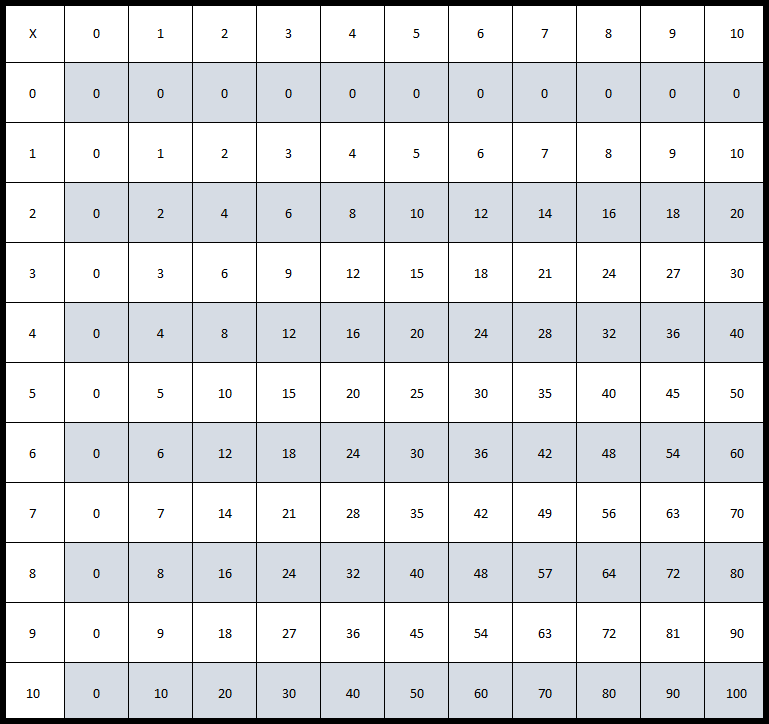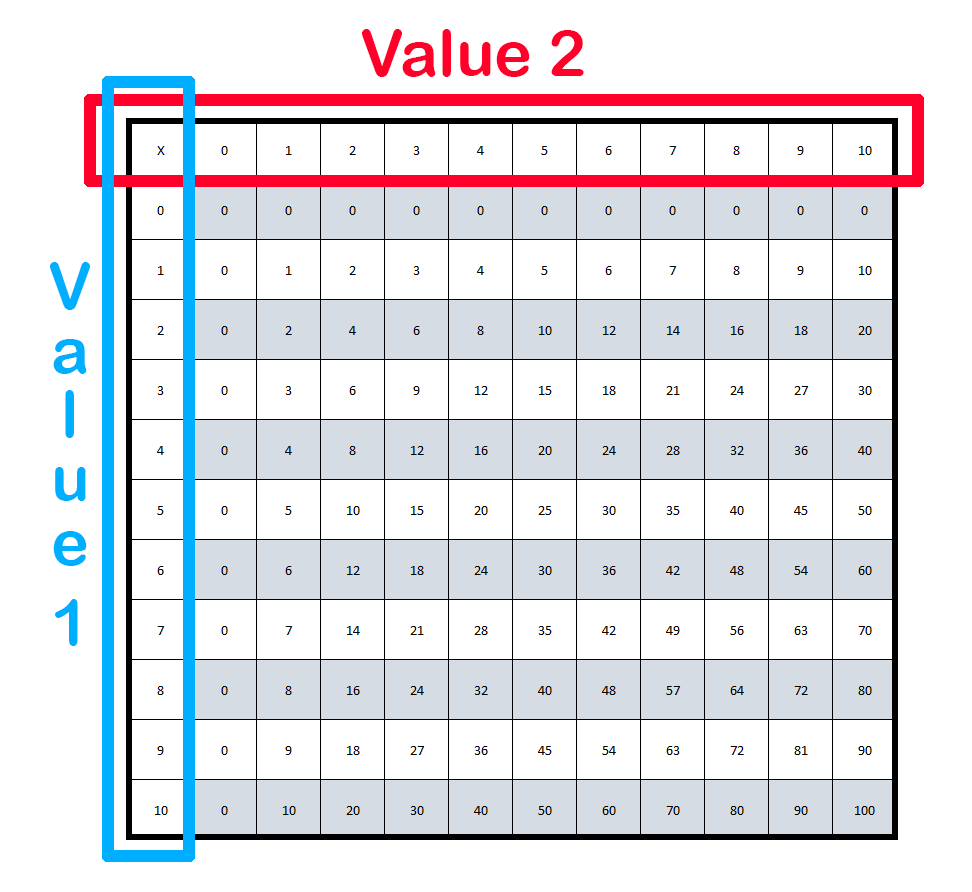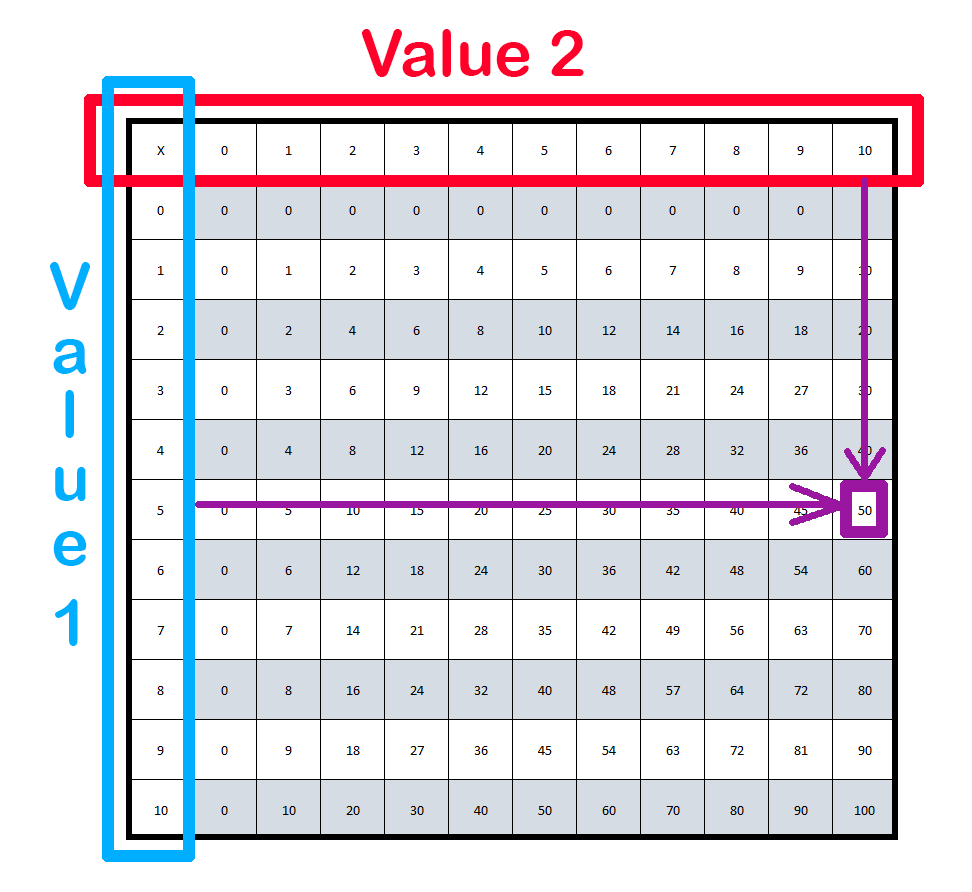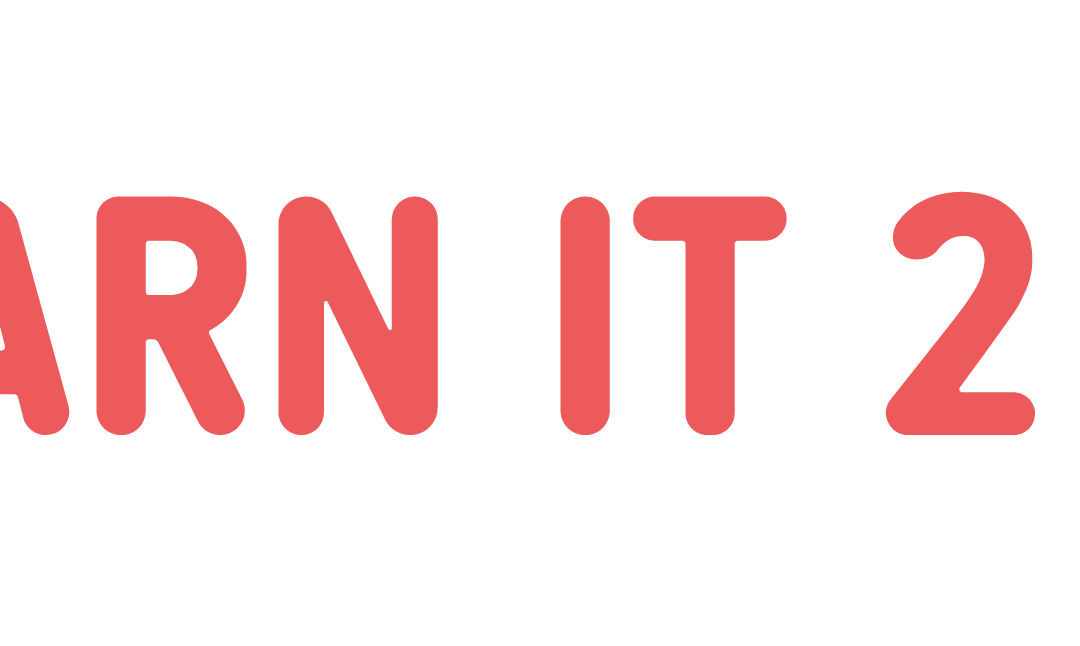Using Multiplication Tables
Understanding multiplication is one of the foundations of learning any form of mathematics past arithmetic. I remember when I entered my math class in the sixth grade, my teacher spent the first two weeks just going over the multiplication table and testing us on it every day until the entire class hit 100%. At first, he’d hand us 30 questions tests and give us only 5 minutes to complete them, and eventually pushed up to 50 questions with the same amount of time. If we got below 80%, we had a 100 problem worksheet for homework that night.
At the time, I thought it was really silly and extremely unfair. Looking back and reflecting on it now, I realize it was because he was reinforcing one of the most important foundations of math and was setting us up for success in the future. The thing is though, he never really taught us how to multiply. He expected us to memorize the multiplication table (which is also a great approach!) but for some kids, it’s also important to explain the process to them.Kids are inquisitive by nature and want to learn, we just need to find the right way to teach them.
The standard multiplication table is a grid ranging from 0 to 10 that shows the relation of two numbers and their multiplied values. Check the example below

It’s a lot to take in, even for adults. But let’s look at how the multiplication table works.

The multiplication table has two values associated with it. For the purposes of explaining, we have Value 1, which is the vertical column, and Value 2 which is the horizontal column.**
When you are looking up a multiplication value on the multiplication table, you are looking at (Value 1) x (Value 2). Let’s say we want to see what 5×10 is. In that case, we’d go to the 5 in Value 1 and the 10 in Value 2 and stop where they meet.

Going to where the two points meet, we can see that the answer is 50. Great! Now we’ve explained it to you, so how do you explain it to your child?
When you’re working with your child, using terminology like “Value” doesn’t really help them. Instead, call them “First number” and “Second number” and show them a blank equation such as this:

The first box holds the first number, and the second box holds the second number. When they encounter a multiplication problem, they just need to find the corresponding values to their multiplication table and trace with their fingers to find where the two meet. Easy, right?
**It doesn’t matter which Value is vertical or horizontal, just that you keep it consistent when teaching your kids. For our demonstration we’ve defined it as such.
Check out our downloadable PDF below where you can practice with your child!

